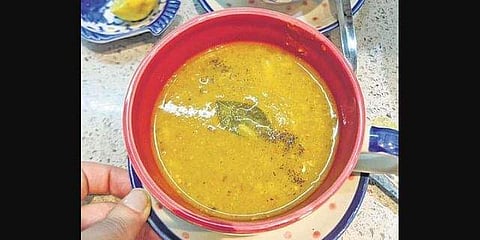
- LIFESTYLE
- FASHION
- FOOD
- ENTERTAINMENT
- EVENTS
- CULTURE
- VIDEOS
- WEB STORIES
- GALLERIES
- GADGETS
- CAR & BIKE
- SOCIETY
- TRAVEL
- NORTH EAST
- INDULGE CONNECT

Long before the word ‘zero waste’ became a trend, Indians have been experimenting with and mastering these skills in their kitchens. Be it paranthas made from leftover dal in the north or serving fermented rice with water for breakfast in the south — we’re doyens in the art of zero-waste cooking.
However, in the past decade or so, people have been embracing a green lifestyle. With climate change impacting every sphere of life, even the way we consume food needs to be revamped.
Thankfully, a few chefs from the Capital have been acing the zero-waste cooking game almost making the trash can redundant.
Conscious cooking
Mention zero-waste cooking and chef Radhika Khandelwal’s name pops up instantly, and for good reason. Not only does she take pride in her sustainable kitchen at GKII’s Fig & Maple, but she’s also passionate about creating awareness about this form of cooking.
Scroll through her Instagram account and you will find quick ideas to use almost everything stored in your fridge.
Khandelwal’s zero-waste journey has been gradual. She says, “As a chef working with so many different ingredients every single day, I also witnessed a huge amount of perfectly-edible parts going to the bin simply because there was a lack of awareness. The more I studied different cuisines and cultures, especially ours — India has a sustainable culinary history — I realised that zero-waste cooking can be a fairly-simple practise if one pays attention to the little things.”
Teach them young
Indian kitchens have lessons worth learning for generations. Take the example of Nishant Choubey, Corporate chef, Seinan Group, Tokyo, who grew up seeing his mother cook vegetables and meat with skin.
“I have always found that cooking with skin in fact enhances the flavour. Once I started cooking in a professional kitchen, I understood the science behind zero-waste cooking.”
Similarly, chef Anahita Dhondy — who has authored Parsi Kitchen: A Memoir of Food and Family — also learnt the practise of zero-waste cooking while growing up in her Parsi household.
She says, “Zero-waste cooking has been a part of Indian culture. In the Parsi community, there is a dish called Par Edu — eggs are cracked into any dish that is a day-old, and baked. At my grandmother’s house, all the leftover dishes were eaten like this. All these things have been incorporated into my kitchen. In a professional kitchen, I realised there are so many things going into the bin just because of the lack of time.”
Discards are delicious
Khandelwal’s idea of zero-waste cooking is simple: Stop binning orange and banana peels; make the most of a pineapple skin and an apple’s core; don’t just use the leaves but also the stalks while blitzing cilantro chutney. Her zero-waste dishes are extremely popular at Fig & Maple.
She says, “A regular and one of the most popular bar snack on my menu is Skinny Chippin, which uses carrots, beetroot, potatoes and lotus stems along with their skins. During summer, the seeds of raw mango used for our Thecha are turned into bitters at the bar. We also make a zero-waste slaw using apple and cucumber skins along with cilantro stalks that are served with our Kokum Glazed Pork.”
Talking about similar preparations, Choubey says, “I have made garam masala with beetroot peels, fritters with potato peels, a banana peel chutney, watermelon skin tutti fruitti, fish scale pakora, and more. I am on the way to make my kitchen bin-free.”